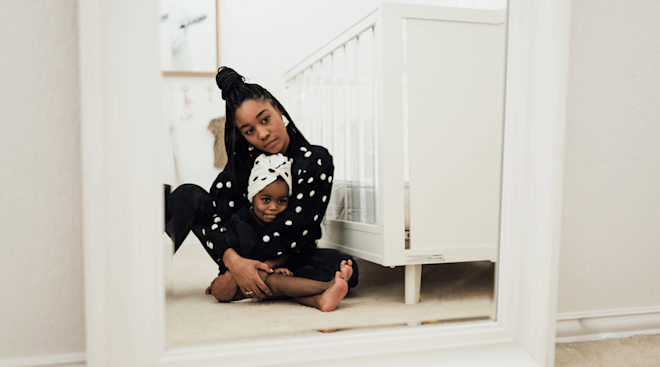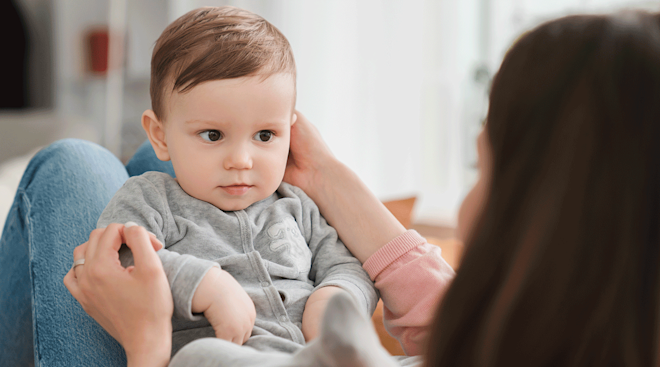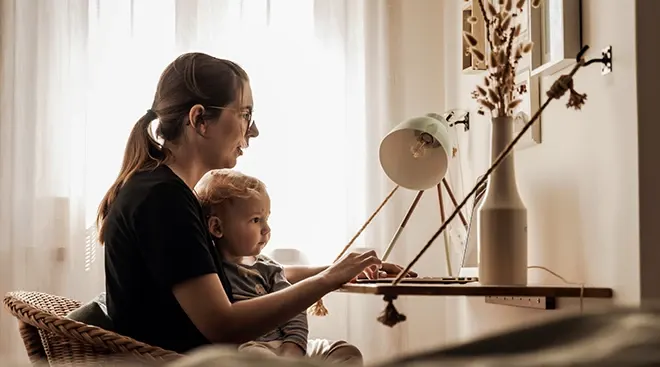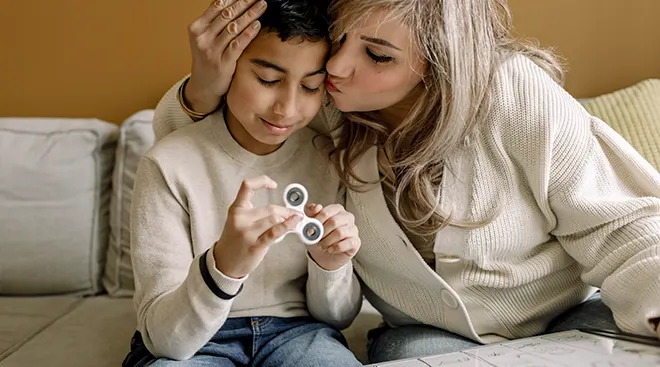What Is Parallel Play—and Why Is It Important for Kids?
Playtime is incredibly important for early childhood development, and different types of play teach little ones different cognitive, emotional and social skills. One key type is parallel play; this is usually seen during the toddler and preschooler years. But exactly what is parallel play? How does it benefit young kids physically, mentally and socially? And what are some parallel play examples? Keep reading to get the lowdown, and learn how to foster the skills your little one needs to participate in parallel play activities.
Parallel play is when kids appear to be playing with other children, but actually play independently near each other, says Maria Shaheen, PhD, senior director of early education at Primrose Schools. “If you observe your toddler, you’ll notice they may play with the same toys right next to other children, but their play language and scenarios don’t intersect.” In other words, while toddlers may begin to observe other children around them, during parallel play, they’re still largely focused on the activity at hand rather than on what their peers are doing. It’s the fourth of sociologist Mildred Parten Newhall’s six stages of play, which chart childhood development from playing alone as a baby to playing with others as a preschooler.
Gabrielle Felman, LCSW, an early childhood development specialist with Lovevery, adds that parallel play looks like two (or more) toddlers playing with toys on the same carpet or next to each other; playing with the same blocks but building separate structures or crafting separately at the same table using the same art kit.
While your child may not play with others yet, parallel play does serve as the “launchpad for social interaction,” Felman says. It offers children the opportunity to observe those playing around them, and it’s how they learn to engage with other kids. It’s not uncommon to see a child imitate another during parallel play, or become curious about a unique object another child is playing with. She adds that during parallel play, children are also:
- Learning to tolerate having peers in their space
- Practicing using the same toys as other kids and sharing
- Observing how other children talk and play
- Seeing how adults interact with other kids during play
Generally speaking, parallel play starts in toddlerhood between 18 and 24 months, Felman says. It typically ends around the start of preschool (3 to 4), when kids move toward cooperative play, which is more social, Shaheen notes. However, both experts say that, while these are average age ranges, how much time a child spends in the parallel play stage can vary based on numerous factors, including their individual development, their environment, whether they have siblings and how soon they go to daycare. It’s also important to note that parallel play can occur with peers of different ages, Felman says, including a younger sibling or an older one who may be more comfortable with social play. “The more exposure and practice a child has being around peers, the more quickly you may see your child move towards [social] play,” Felman notes. “This is why [parallel play] is often noticed in places like preschools, daycares and during playdates with other children.”
There are lots of ways parents can help their children play independently near their peers. Below, some ways to encourage parallel play:
-
Provide the proper materials: Natasha Burgert, MD, FAAP, a Kansas-based pediatrician and spokesperson for the American Academy of Pediatrics (AAP), recommends stocking up on multiple, similar toys to ensure playdates go smoothly. “Anticipate that the kids are going to do things side-by-side and not share very well,” she says. “Make sure you have similar toys, so they can do the same thing at the same time. That way, they can develop an interactive relationship.”
-
Create the proper opportunities: Changing play locations encourages kids’ creativity and imagination, Shaheen says. To do this, parents can create plenty of opportunities for parallel play through playdates, childcare, schooling and other [events within your community, Felman notes. Moreover, Shaheen suggests rotating out your child’s play materials. This helps them come up with new ways to play and allows them to explore which play materials they like the most.
-
Allow your child alone time: Interacting with other people all the time can be difficult—even for adults. Shaheen suggests giving your child time to play with and without other kids, so they have time for all types of play, including solitary, parallel and, eventually, social play. “A holistic play experience includes providing your child with many different opportunities to play in various ways.”
Some parents may worry that a preference for non-social play—such as parallel play—in children may be a sign of neurodivergence. Shaheen notes that children on the spectrum may gravitate toward repetition in their play and struggle with imaginative or cooperative play. However, both experts emphasize that play preferences alone aren’t enough to make a diagnosis. “Autism spectrum disorder or ADHD cannot, and should not, be diagnosed based on play skills alone,” Felman says. “There are various criteria, signs and symptoms that need to be met to obtain a diagnosis,” many of which your pediatrician will watch for during your child’s routine checkups. Plus, no two individuals share the same thoughts, abilities or personalities. Some children may prefer to play with a caregiver, have a lack of experience with other children, be shy around peers or find social interactions overwhelming, Felman says. “We all want to play alone sometimes, and some personalities prefer to be alone more than others,” Shaheen agrees.
If you’re nervous about how your child plays, Shaheen recommends watching them closely and observing their play preferences and emotional response to being around other kids. If you notice anything concerning, bring it up to your pediatrician. “Play skills can be taught, and struggling with these skills does not always mean a diagnosis is necessary,” Felman says.
Once your child is comfortable with their peers, they’ll likely move on to associative, cooperative and other social stages of play. The best way to support them as they move through all these different experiences? Provide plenty of learning opportunities. “Play offers children the chance to process life experiences and to practice events that may be coming down the pipeline—like a doctor’s appointment or a new sibling,” Felman says. “Giving your child the opportunity to play and explore is one of the best ways to support their development.”
More from The Bump:
Please note: The Bump and the materials and information it contains are not intended to, and do not constitute, medical or other health advice or diagnosis and should not be used as such. You should always consult with a qualified physician or health professional about your specific circumstances.
Natasha Burgert, MD, is a pediatrician in Overland Park, Kansas, and a spokesperson for the AAP. She earned her medical degree from the University of Nebraska Medical Center.
Gabrielle Felman, LCSW, is an early childhood development specialist and the director of childhood development for popular kids’ toy brand Lovevery. She earned her master of science degree in early childhood education from Bank Street College of Education, as well as her master of science degree in clinical and medical social work from Columbia University. She completed a clinical residency at New York Presbyterian Morgan Stanley Children’s Hospital.
Maria Shaheen, Ph.D., is the senior director of early education at Primrose Schools and has over a decade of experience working as a teacher. She has a doctoral degree in curriculum and a master’s degree in elementary education, both from Kent State University, located in Ohio.
Learn how we ensure the accuracy of our content through our editorial and medical review process.
Navigate forward to interact with the calendar and select a date. Press the question mark key to get the keyboard shortcuts for changing dates.





















































